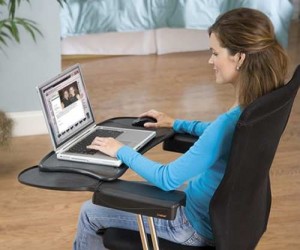There are thousands of office input devices to choose from, but two very common options people find themselves contemplating are a traditional, flat-design mouse and the joystick-like vertical mouse. Here are a few considerations when doing your shopping.
Traditional
- The traditional mouse positions your hand, wrist, and forearm in a posture similar to that used while typing. This minimizes inward/outward forearm rotations when transitioning between the keyboard and mouse.
- If the mouse is large enough to support most of the palm and fingers, it requires little effort to maneuver when tracking the cursor because the natural weight of your hand will move it.
- Many traditional mice have a universal design for right and left buttons with a scroll wheel in the middle, which easily accommodates right- and left-handed users. The clicking orientation (right versus left) can be adjusted in your computer’s Control Panel menu.
Vertical
- The vertical mouse is often recommended for users who have associated hand/wrist pain because it requires more use of the larger muscles of the upper arm and shoulder. Users often report an initial learning curve to adjust to synchronizing entire arm movements and small cursor tracking.
- Vertical mice are typically equipped with a scroll button versus a wheel, to reduce repetitive motions of the middle finger. Right and left clicking is achieved with a toggle button using the thumb.
- Vertical mice are generally designed specifically for either left- or right-hand use, so if you want to share the workload between left and right hands, you may need two mice.
At least both types of mice share one commonly desired feature: wireless models are widely available!
